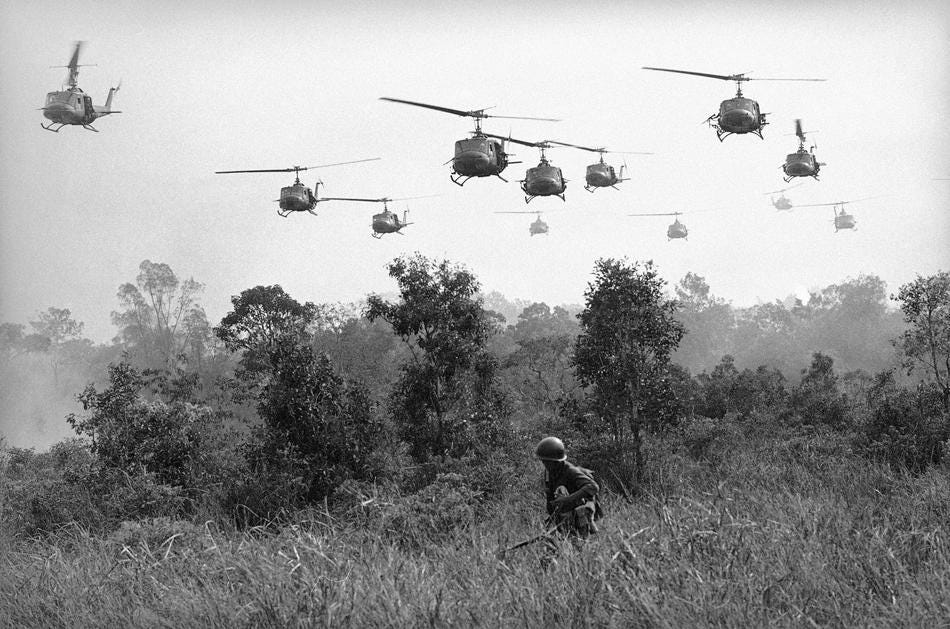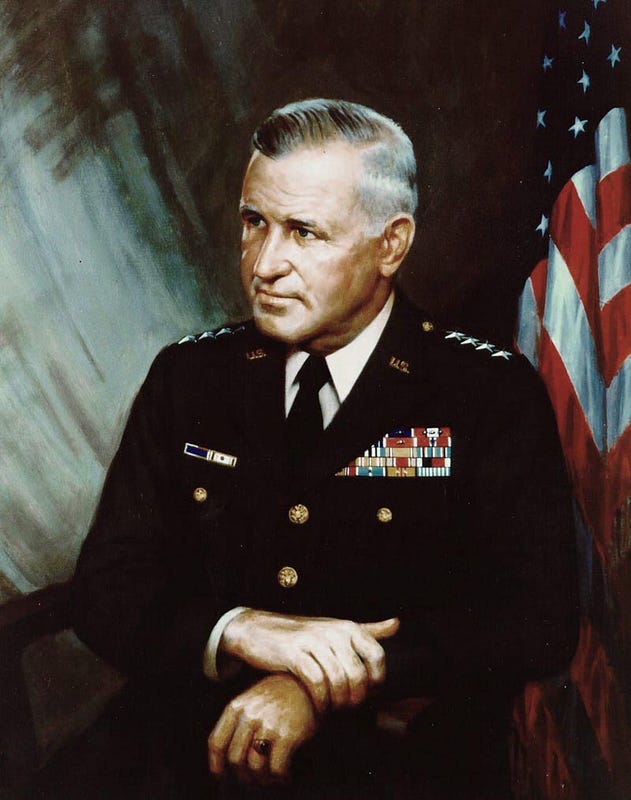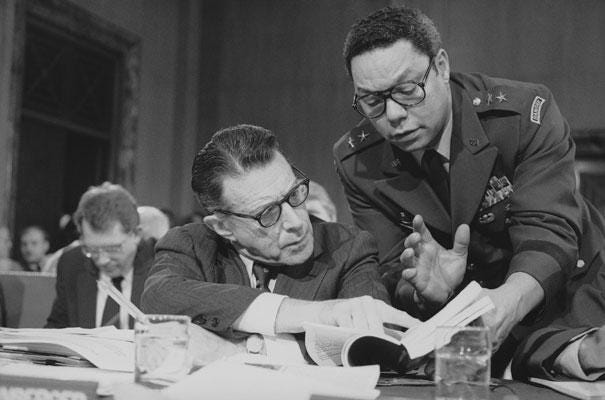On Strategy, Clausewitz, Civil-Military Relations, Post-Vietnam Malaise, and America’s ISIS Quandary
This post is provided by Martin Skold, who is currently pursuing his PhD in international relations at the University of St. Andrews, with a thesis focusing on the strategy of long-term international security competition. He is a contributor to the Center for International Maritime Security’s NextWar blog.
War, we are told by a wise elder, is the “pursuit of policy by other means.” In fact, this famous statement was perhaps more an aspiration on Carl Von Clausewitz’ part than a statement of metaphysical truth. It is often observed that German generals in the succeeding generations completely forgot this famous dictum, which demoted them relative to civilian leaders they often held in contempt. But American generals do not seem to be immune, either.
In any discussion of strategy for any war a democracy might fight, public support should be seen as a constraint on resources – it is not always unlimited, and it shapes what options are available.
 Retired Marine Corps Gen. James Mattis (Rick Vasquez, Stars and Stripes)
Retired Marine Corps Gen. James Mattis (Rick Vasquez, Stars and Stripes)
As retired U.S. Marine General James’ Mattis’ comments regarding the advisability of ruling out ground troops to combat ISISdemonstrate, there is a disconnect growing between America’s military and political leadership over how to respond to ISIS. This disconnect is actually less one of ends than of means: the disagreement regarding ISIS is not one regarding the desirability of defeating ISIS, but rather of what tools are available and worthwhile to use to do it. In any discussion of strategy for any war a democracy might fight, public support should be seen as a constraint on resources – it is not always unlimited, and it shapes what options are available. To fail to account for politics is to fail strategically.
 Hovering U.S. Army helicopters pour machine gun fire into tree line to cover the advance of Vietnamese ground troops in an attack on a Viet Cong camp 18 miles north of Tay Ninh on March 29, 1965, which is northwest of Saigon near the Cambodian border. Combined assault routed Viet Cong guerrilla force. (AP Photo/Horst Faas)
Hovering U.S. Army helicopters pour machine gun fire into tree line to cover the advance of Vietnamese ground troops in an attack on a Viet Cong camp 18 miles north of Tay Ninh on March 29, 1965, which is northwest of Saigon near the Cambodian border. Combined assault routed Viet Cong guerrilla force. (AP Photo/Horst Faas)
It is important to see the generals’ mindset in its historic context. The Vietnam War cast a long shadow, and still influences the mindset of America’s military leaders. In the years following Vietnam, a movement emerged within the U.S. military and the American civilian defense establishment to implement what its members saw as the lessons of that catastrophe. In the view of many military officers and civilian officials, the conflict had been lost not because of a failed counterinsurgency strategy or even the unfeasibility of obtaining the requisite public support for involvement in a long and thankless guerrilla war, but because the civilian leadership had failed to set a clear policy and give the military the tools to achieve it. Most notably, politicians had set limits on the military’s use of force by initially preventing the escalation of the war outside South Vietnam. (For a critique of this argument, see Max Boot’s book, The Savage Wars Of Peace.)
 U.S. Army General Creighton W. Abrams, Jr., Chief of Staff of the U.S. Army
U.S. Army General Creighton W. Abrams, Jr., Chief of Staff of the U.S. Army
(Herbert Elmer Abrams)
In particular, this view colored and shaped the key administrative and policy decisions made within the Defense Department in the following decade, and probably beyond. It was the impetus behind Army Chief of Staff Gen. Creighton Abrams’ famous decision to restructure the force so that reserves would need to be called up, and thus the public itself mobilized. If a major theatre deployment occurred, this administrative structure would, theoretically, deter politicians from starting unpopular wars, on the one hand, and mobilize the public behind a war once it started, on the other. In view of what had actually occurred in Vietnam, this may have been overoptimistic. The U.S. troop presence there exceeded half a million at the war’s height, and the use of conscription meant that the public was, if anything, too much involved – and yet neither the scope and cost of the conflict nor the employment of involuntary military service served to prevent the war from starting. Nor did Abrams’ reforms prevent the U.S. from getting involved in Iraq in 2003. On the other hand, the policy did ensure that when the U.S. fought in Iraq decades later, reserves and National Guardsmen were deployed against all expectations and against the public’s wishes and better judgment, making an unpopular war all the less popular.
 Defense Secretary Caspar Weinberger speaks with Army Maj. Gen. Colin Powell during testimony before the Senate Budget Committee on Capitol Hill on Feb. 8, 1985. (AP Photo)
Defense Secretary Caspar Weinberger speaks with Army Maj. Gen. Colin Powell during testimony before the Senate Budget Committee on Capitol Hill on Feb. 8, 1985. (AP Photo)
At a higher level of decision-making, the thesis that Vietnam was the result of political mismanagement and micromanagement led to the promulgation of the famous Powell-Weinberger Doctrine (or just the Powell Doctrine), made famous by Gen. Colin Powell and Defense Secretary Caspar Weinberger. More an informal wish list than a policy statement, the Doctrine held, in summary, that the U.S. should avoid involvement in a major conflict unless its interests were seriously threatened, it employed as much force as possible and fought to win, a clear policy and exit strategy existed, and there was a realistic expectation that the public and its elected leaders would support the war effort to the extent necessary. (The Gulf War is often seen as a textbook case of the Powell Doctrine in action. It is also the only one of numerous American wars to date that everyone agrees followed it.) Although this doctrine made sense in committing land forces – particularly sending ground troops to fight a frustrating and protracted counterinsurgency campaign – it makes less sense when the U.S. has no intention of committing ground troops but still has policy objectives that require some amount of force to be used.
The real variable is not how much force is used, but how it is used, and whether any amount of force can achieve the required political outcome.
Students of counterinsurgency will note in particular that the Powell Doctrine is in some respects irrelevant to counterinsurgency campaigns, insofar as final “victory” in them is often elusive, public support often runs out before the final objective is achieved and the exit strategy can be executed. The real variable is not how much force is used, but how it is used, and whether any amount of force can achieve the required political outcome. In some respects, the Powell Doctrine is merely an entirely justified caution against waging a major counterinsurgency campaign. Unfortunately, this is precisely where it limits itself, because when there is clearly a need to take action against an elusive enemy and a major counterinsurgency campaign cannot be waged, the Powell Doctrine cannot be satisfied.
It goes without saying, but it bears repeating: whatever the U.S. achieved in two decade-long counterinsurgency campaigns came at costs the public was not willing to pay. If only out of a sense of humility, it pays to count the blood-and-treasure cost for a moment.
The human costs for Americans of the wars in Iraq and Afghanistan, in dead and maimed service members, were tragic. Although the American people are often held to be willing to accept combat deaths and casualties if they achieve something worthwhile, even allowing for the fact that Iraq was in reasonable shape when the U.S. exited, the results were not seen to justify the blood spilled.
 Hovering U.S. Army helicopters pour machine gun fire into tree line to cover the advance of Vietnamese ground troops in an attack on a Viet Cong camp 18 miles north of Tay Ninh on March 29, 1965, which is northwest of Saigon near the Cambodian border. Combined assault routed Viet Cong guerrilla force. (AP Photo/Horst Faas)
Hovering U.S. Army helicopters pour machine gun fire into tree line to cover the advance of Vietnamese ground troops in an attack on a Viet Cong camp 18 miles north of Tay Ninh on March 29, 1965, which is northwest of Saigon near the Cambodian border. Combined assault routed Viet Cong guerrilla force. (AP Photo/Horst Faas)It is important to see the generals’ mindset in its historic context. The Vietnam War cast a long shadow, and still influences the mindset of America’s military leaders. In the years following Vietnam, a movement emerged within the U.S. military and the American civilian defense establishment to implement what its members saw as the lessons of that catastrophe. In the view of many military officers and civilian officials, the conflict had been lost not because of a failed counterinsurgency strategy or even the unfeasibility of obtaining the requisite public support for involvement in a long and thankless guerrilla war, but because the civilian leadership had failed to set a clear policy and give the military the tools to achieve it. Most notably, politicians had set limits on the military’s use of force by initially preventing the escalation of the war outside South Vietnam. (For a critique of this argument, see Max Boot’s book, The Savage Wars Of Peace.)
 U.S. Army General Creighton W. Abrams, Jr., Chief of Staff of the U.S. Army
U.S. Army General Creighton W. Abrams, Jr., Chief of Staff of the U.S. Army(Herbert Elmer Abrams)
In particular, this view colored and shaped the key administrative and policy decisions made within the Defense Department in the following decade, and probably beyond. It was the impetus behind Army Chief of Staff Gen. Creighton Abrams’ famous decision to restructure the force so that reserves would need to be called up, and thus the public itself mobilized. If a major theatre deployment occurred, this administrative structure would, theoretically, deter politicians from starting unpopular wars, on the one hand, and mobilize the public behind a war once it started, on the other. In view of what had actually occurred in Vietnam, this may have been overoptimistic. The U.S. troop presence there exceeded half a million at the war’s height, and the use of conscription meant that the public was, if anything, too much involved – and yet neither the scope and cost of the conflict nor the employment of involuntary military service served to prevent the war from starting. Nor did Abrams’ reforms prevent the U.S. from getting involved in Iraq in 2003. On the other hand, the policy did ensure that when the U.S. fought in Iraq decades later, reserves and National Guardsmen were deployed against all expectations and against the public’s wishes and better judgment, making an unpopular war all the less popular.
 Defense Secretary Caspar Weinberger speaks with Army Maj. Gen. Colin Powell during testimony before the Senate Budget Committee on Capitol Hill on Feb. 8, 1985. (AP Photo)
Defense Secretary Caspar Weinberger speaks with Army Maj. Gen. Colin Powell during testimony before the Senate Budget Committee on Capitol Hill on Feb. 8, 1985. (AP Photo)At a higher level of decision-making, the thesis that Vietnam was the result of political mismanagement and micromanagement led to the promulgation of the famous Powell-Weinberger Doctrine (or just the Powell Doctrine), made famous by Gen. Colin Powell and Defense Secretary Caspar Weinberger. More an informal wish list than a policy statement, the Doctrine held, in summary, that the U.S. should avoid involvement in a major conflict unless its interests were seriously threatened, it employed as much force as possible and fought to win, a clear policy and exit strategy existed, and there was a realistic expectation that the public and its elected leaders would support the war effort to the extent necessary. (The Gulf War is often seen as a textbook case of the Powell Doctrine in action. It is also the only one of numerous American wars to date that everyone agrees followed it.) Although this doctrine made sense in committing land forces – particularly sending ground troops to fight a frustrating and protracted counterinsurgency campaign – it makes less sense when the U.S. has no intention of committing ground troops but still has policy objectives that require some amount of force to be used.
The real variable is not how much force is used, but how it is used, and whether any amount of force can achieve the required political outcome.
Students of counterinsurgency will note in particular that the Powell Doctrine is in some respects irrelevant to counterinsurgency campaigns, insofar as final “victory” in them is often elusive, public support often runs out before the final objective is achieved and the exit strategy can be executed. The real variable is not how much force is used, but how it is used, and whether any amount of force can achieve the required political outcome. In some respects, the Powell Doctrine is merely an entirely justified caution against waging a major counterinsurgency campaign. Unfortunately, this is precisely where it limits itself, because when there is clearly a need to take action against an elusive enemy and a major counterinsurgency campaign cannot be waged, the Powell Doctrine cannot be satisfied.
It goes without saying, but it bears repeating: whatever the U.S. achieved in two decade-long counterinsurgency campaigns came at costs the public was not willing to pay. If only out of a sense of humility, it pays to count the blood-and-treasure cost for a moment.
The human costs for Americans of the wars in Iraq and Afghanistan, in dead and maimed service members, were tragic. Although the American people are often held to be willing to accept combat deaths and casualties if they achieve something worthwhile, even allowing for the fact that Iraq was in reasonable shape when the U.S. exited, the results were not seen to justify the blood spilled.
No comments:
Post a Comment